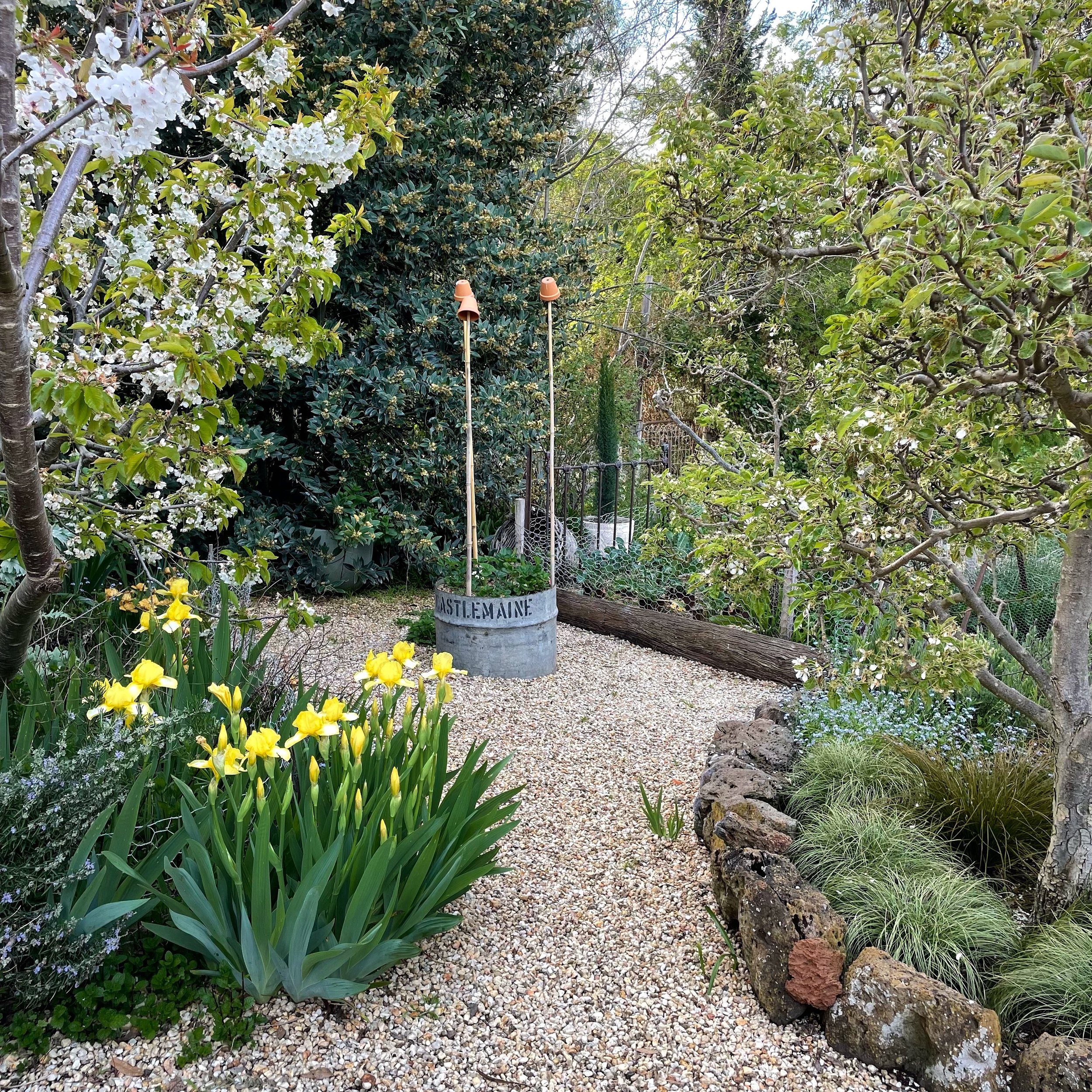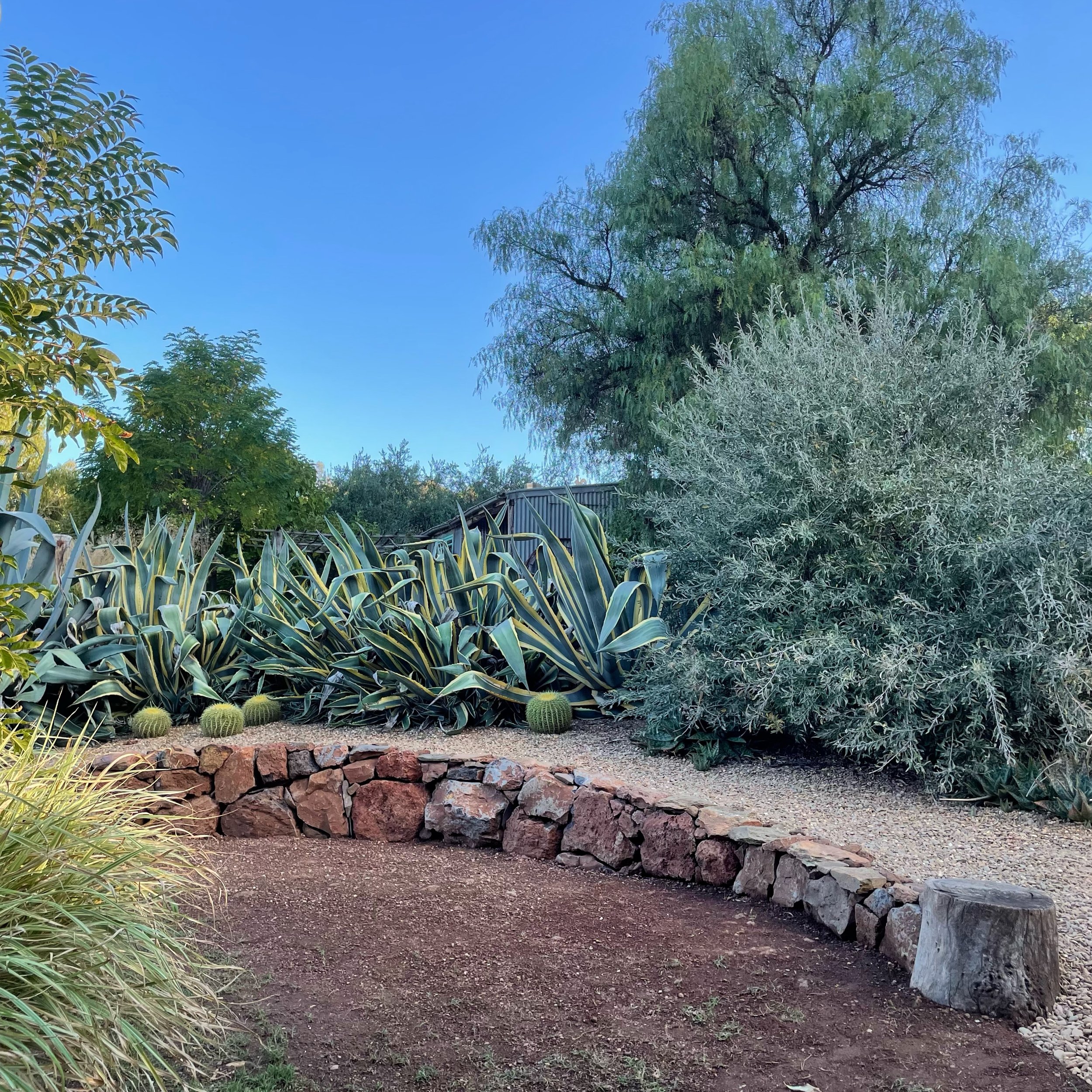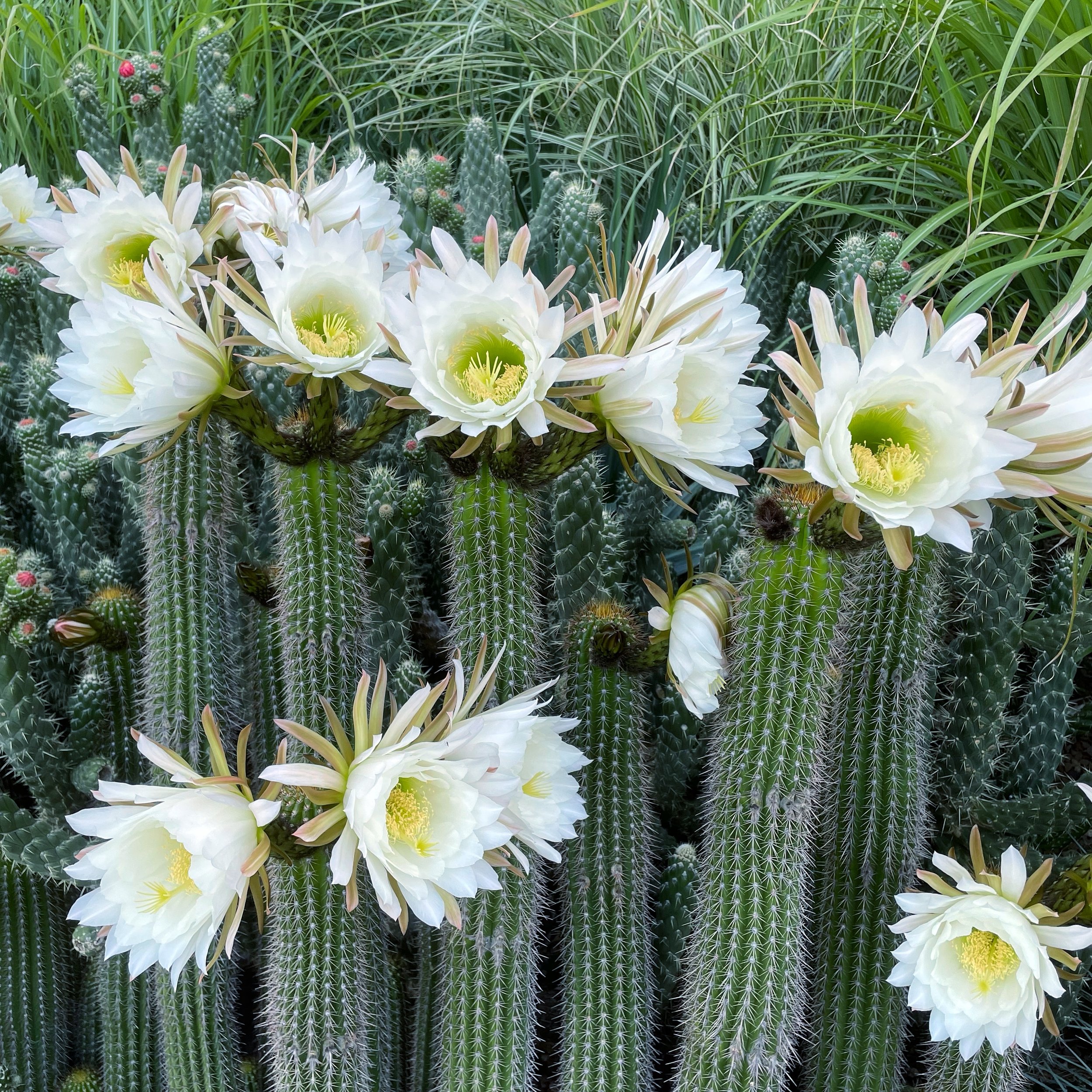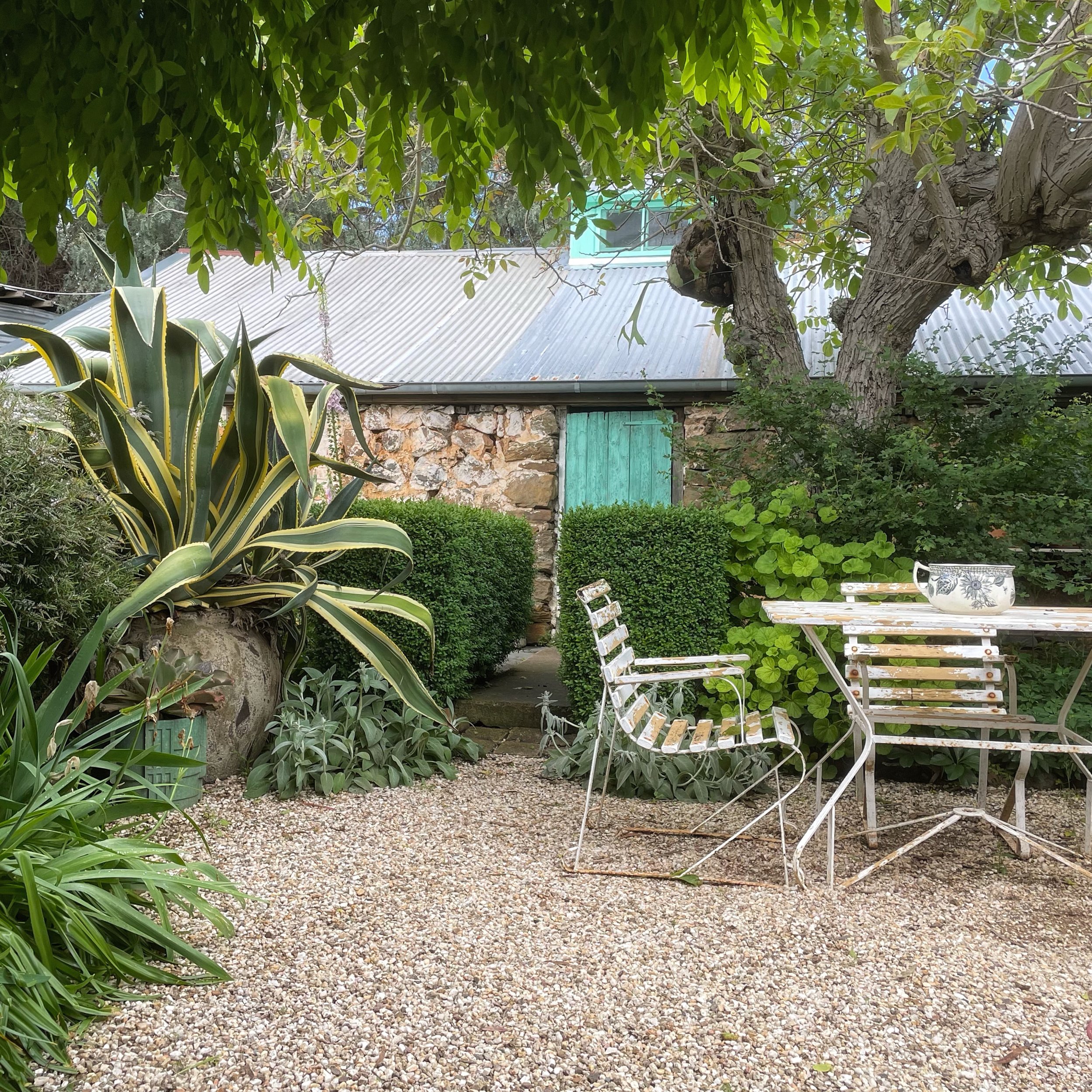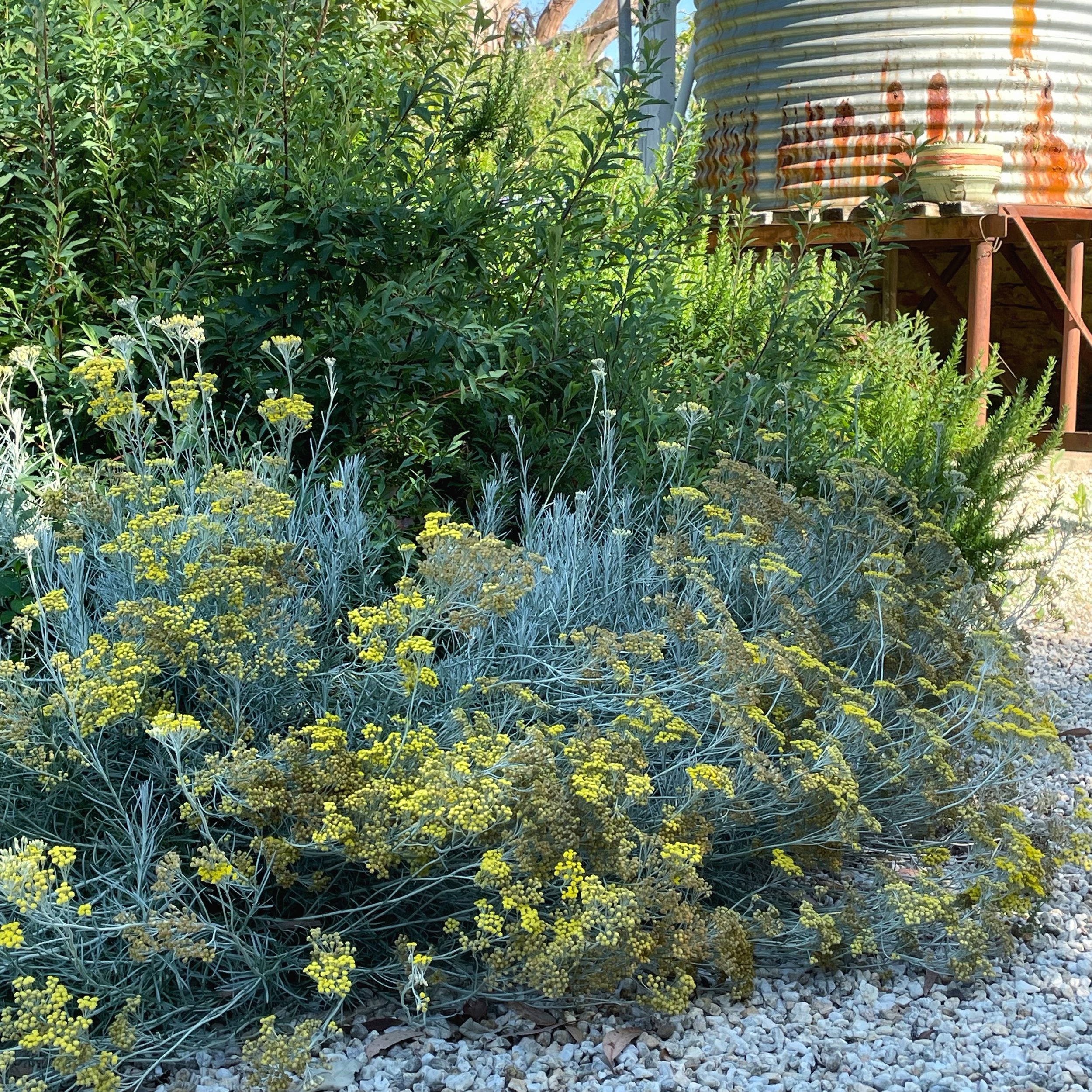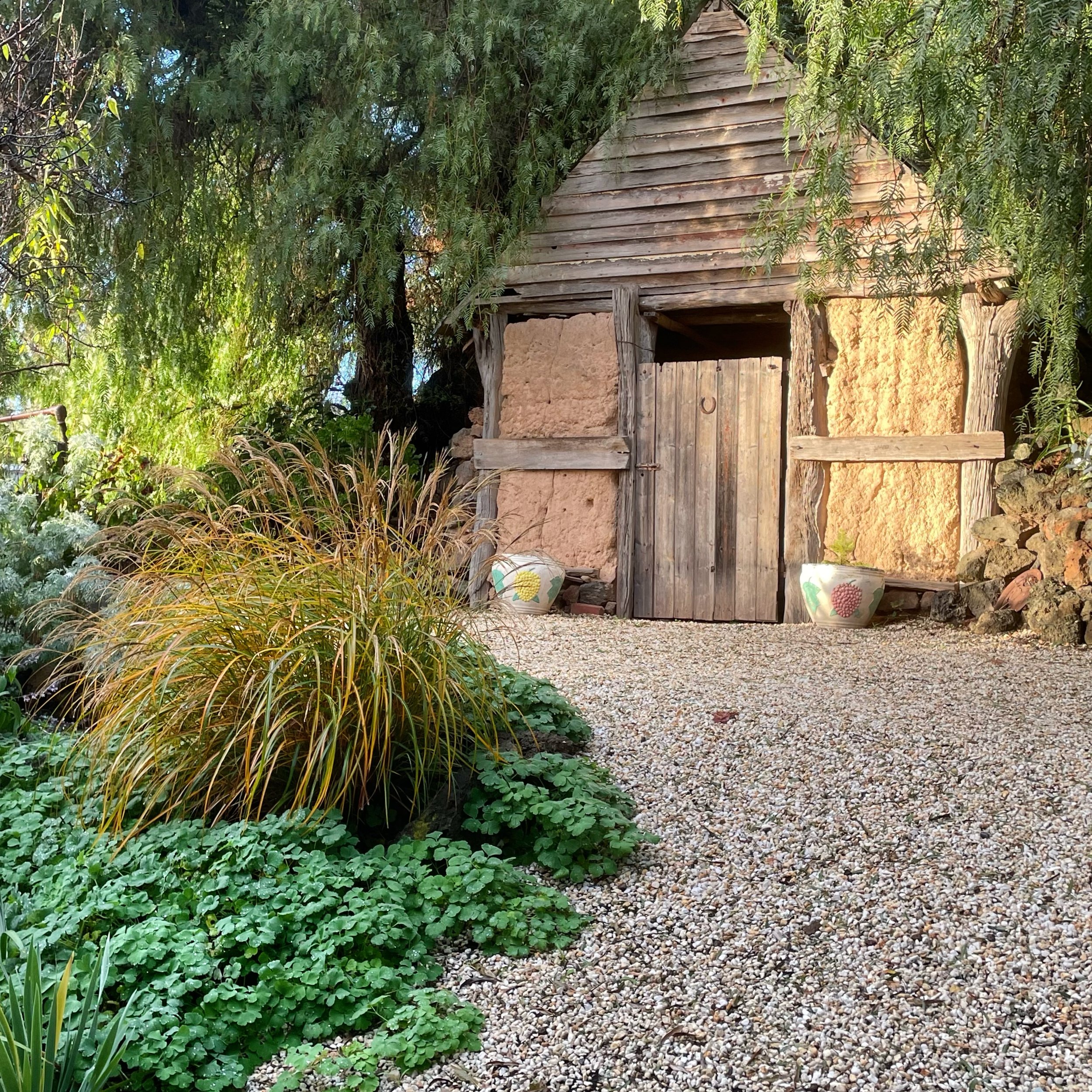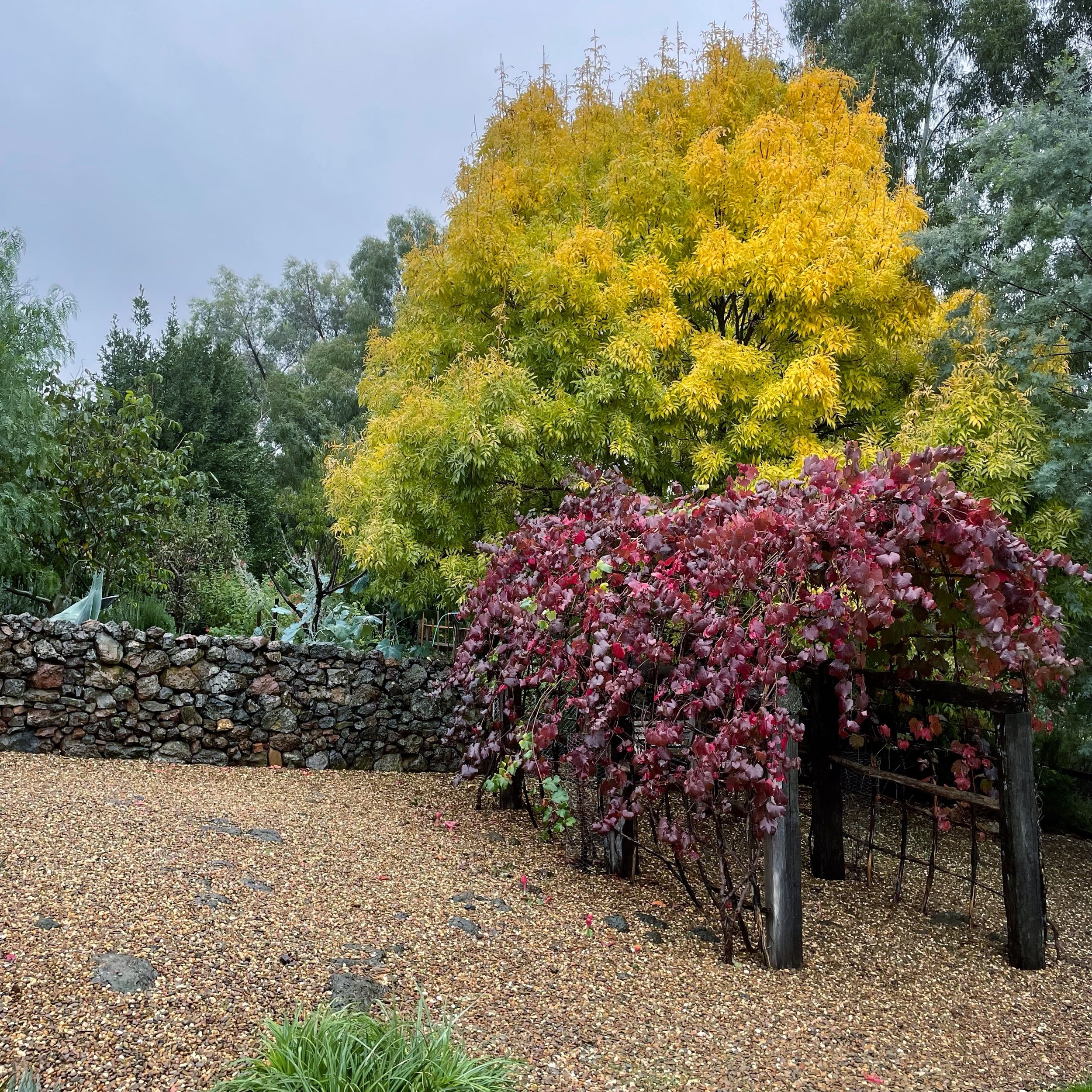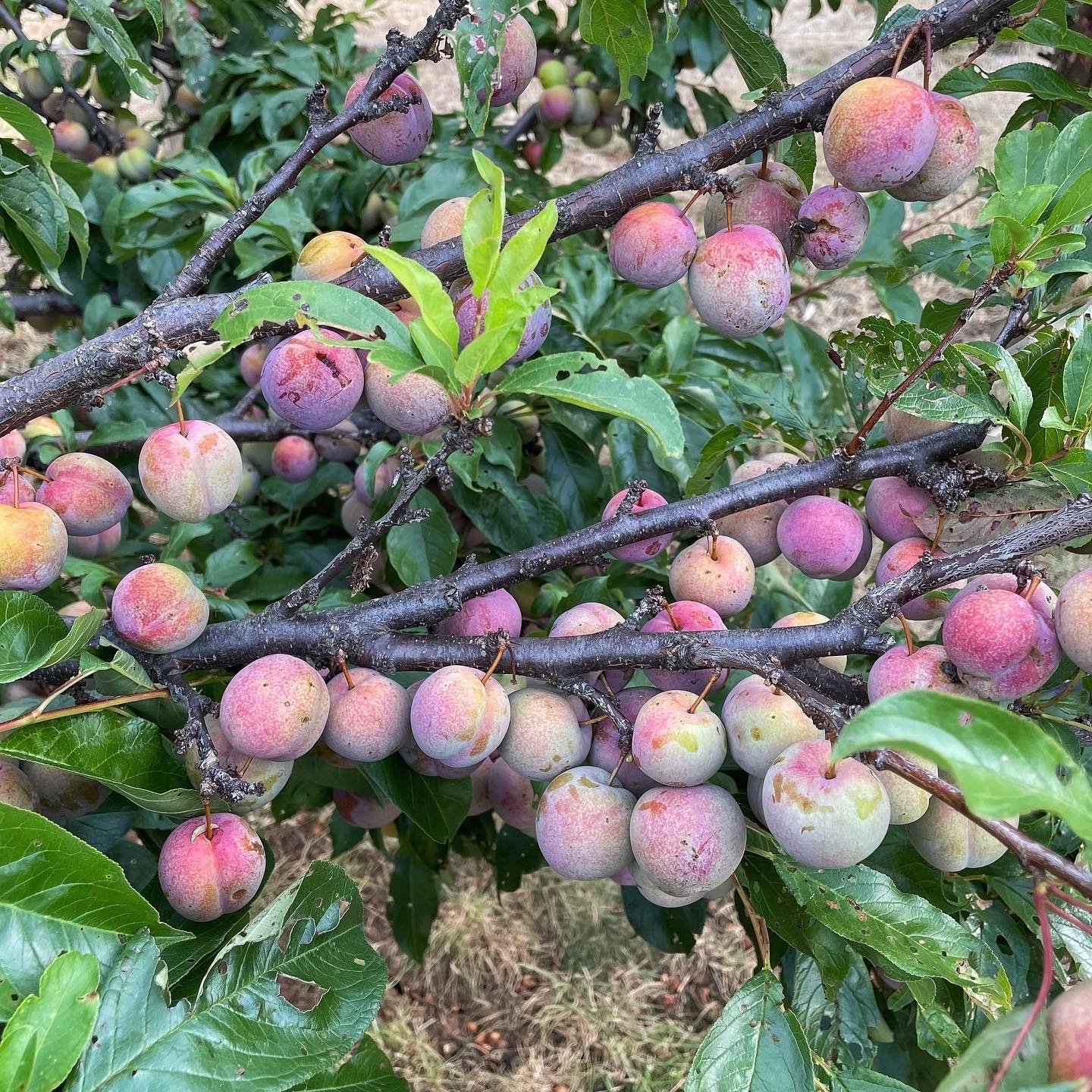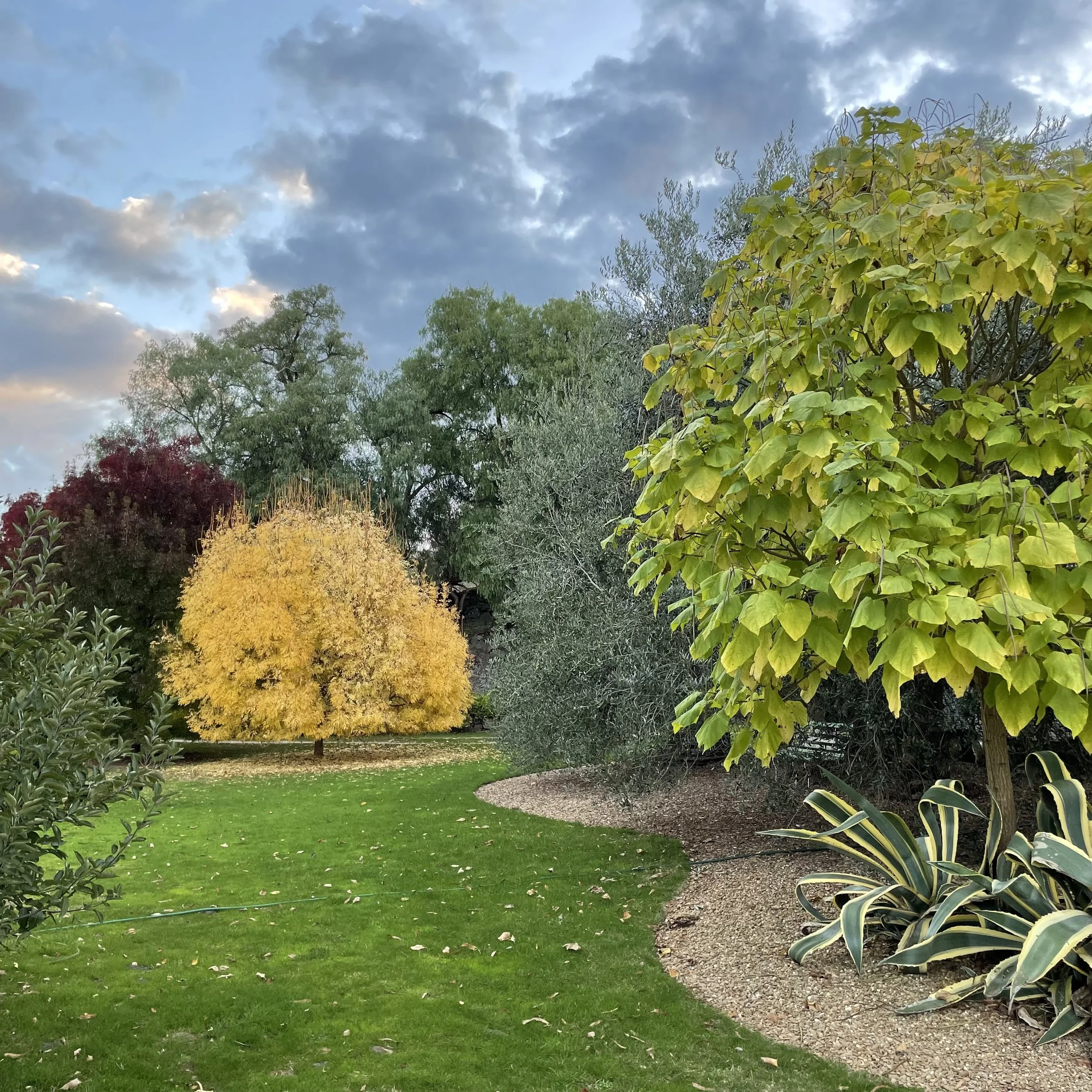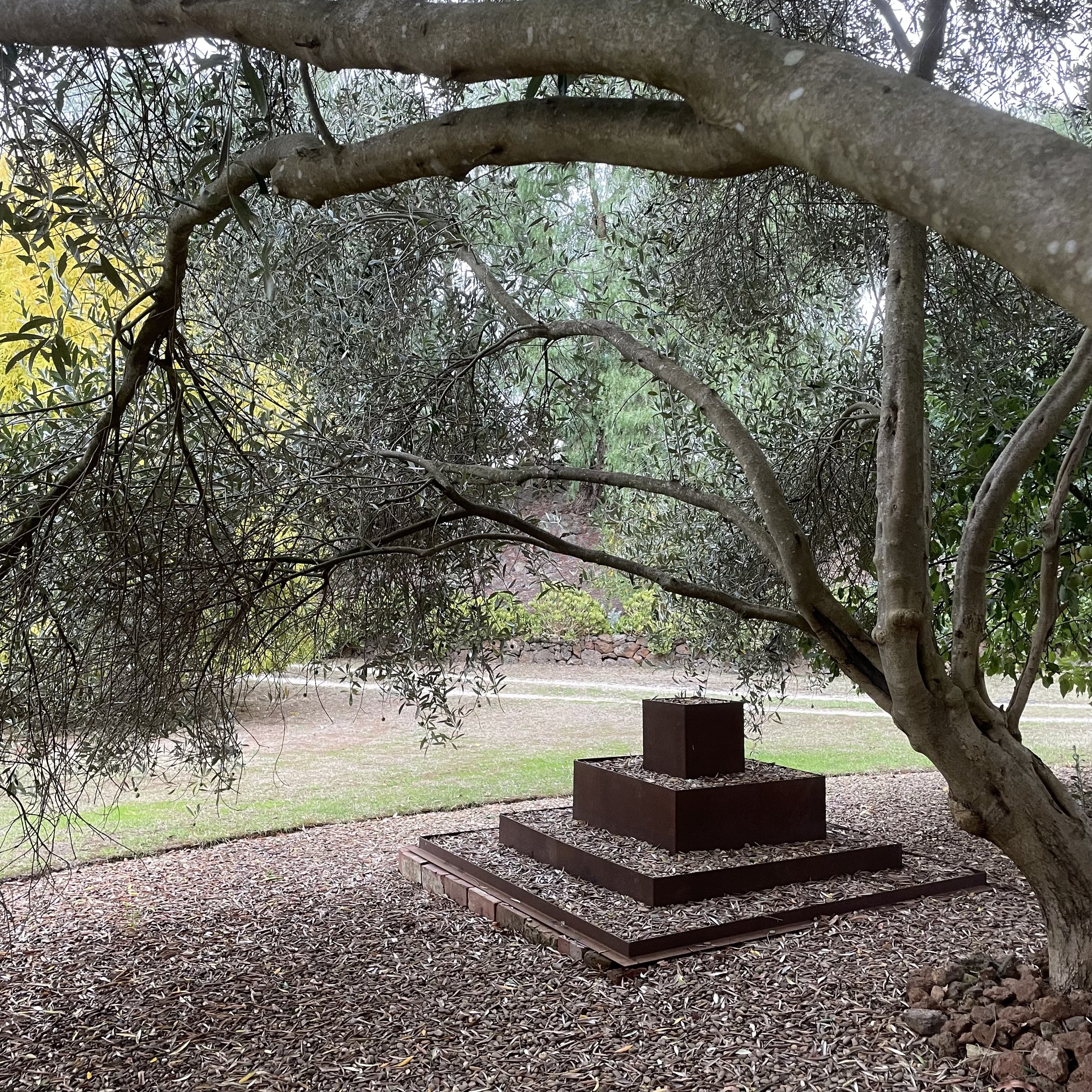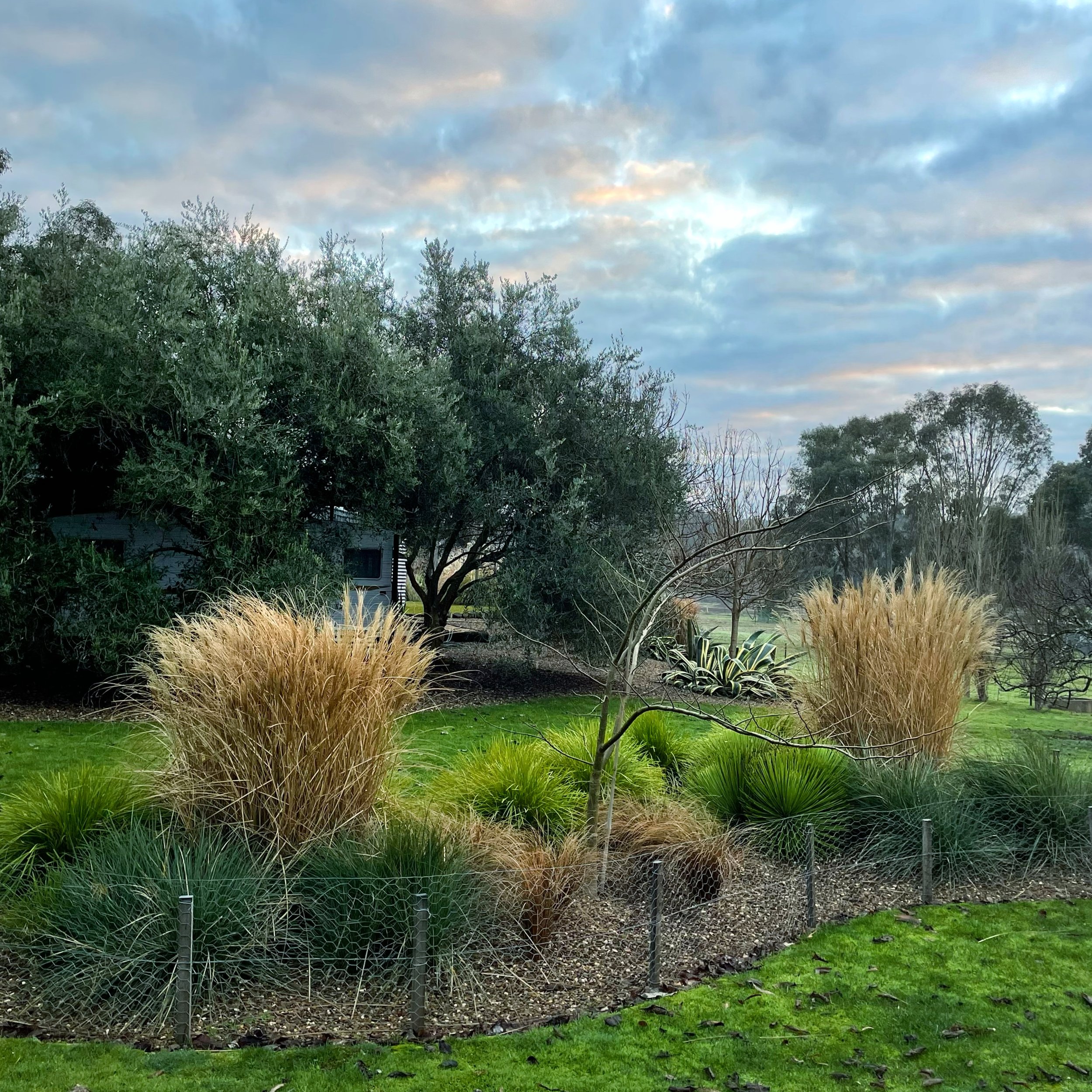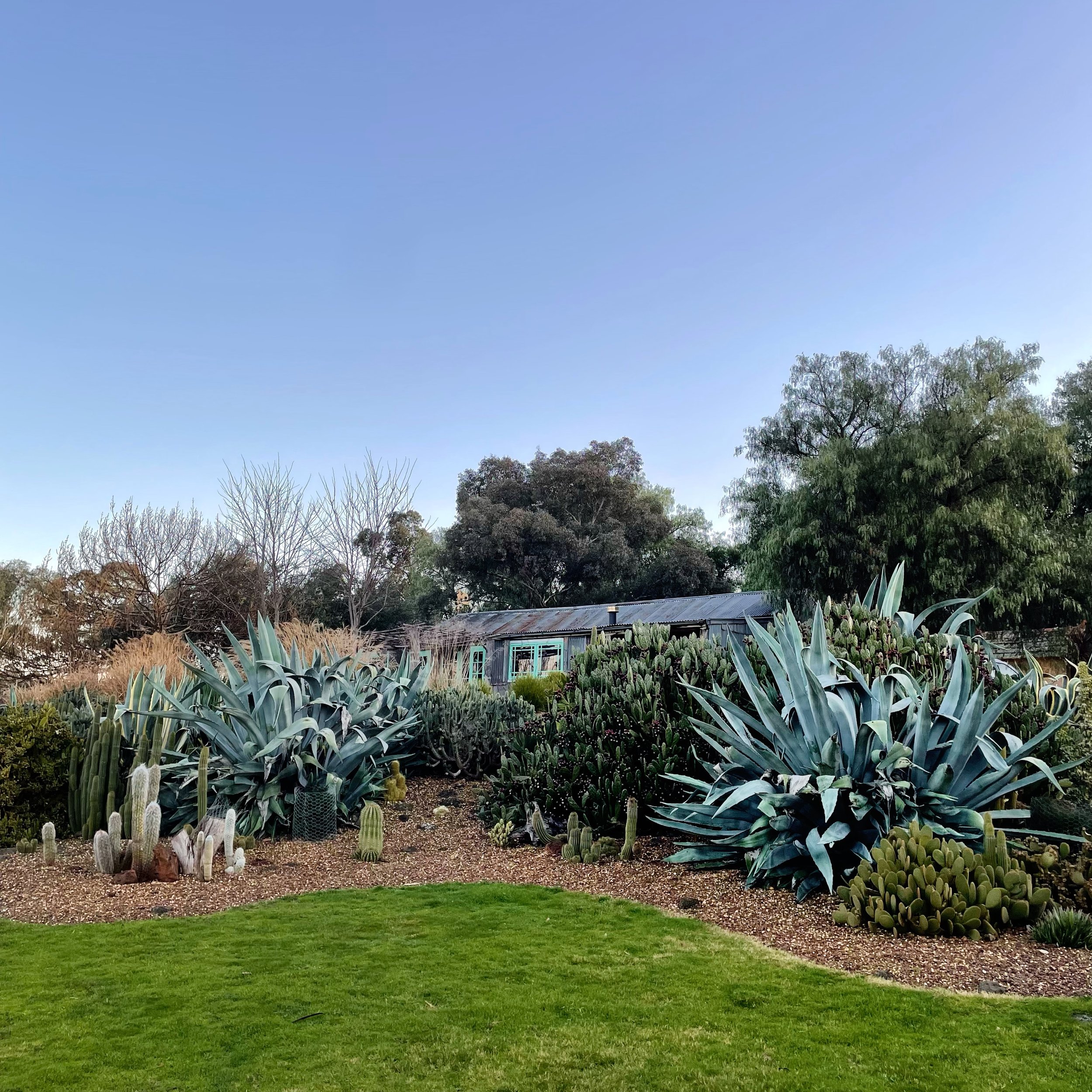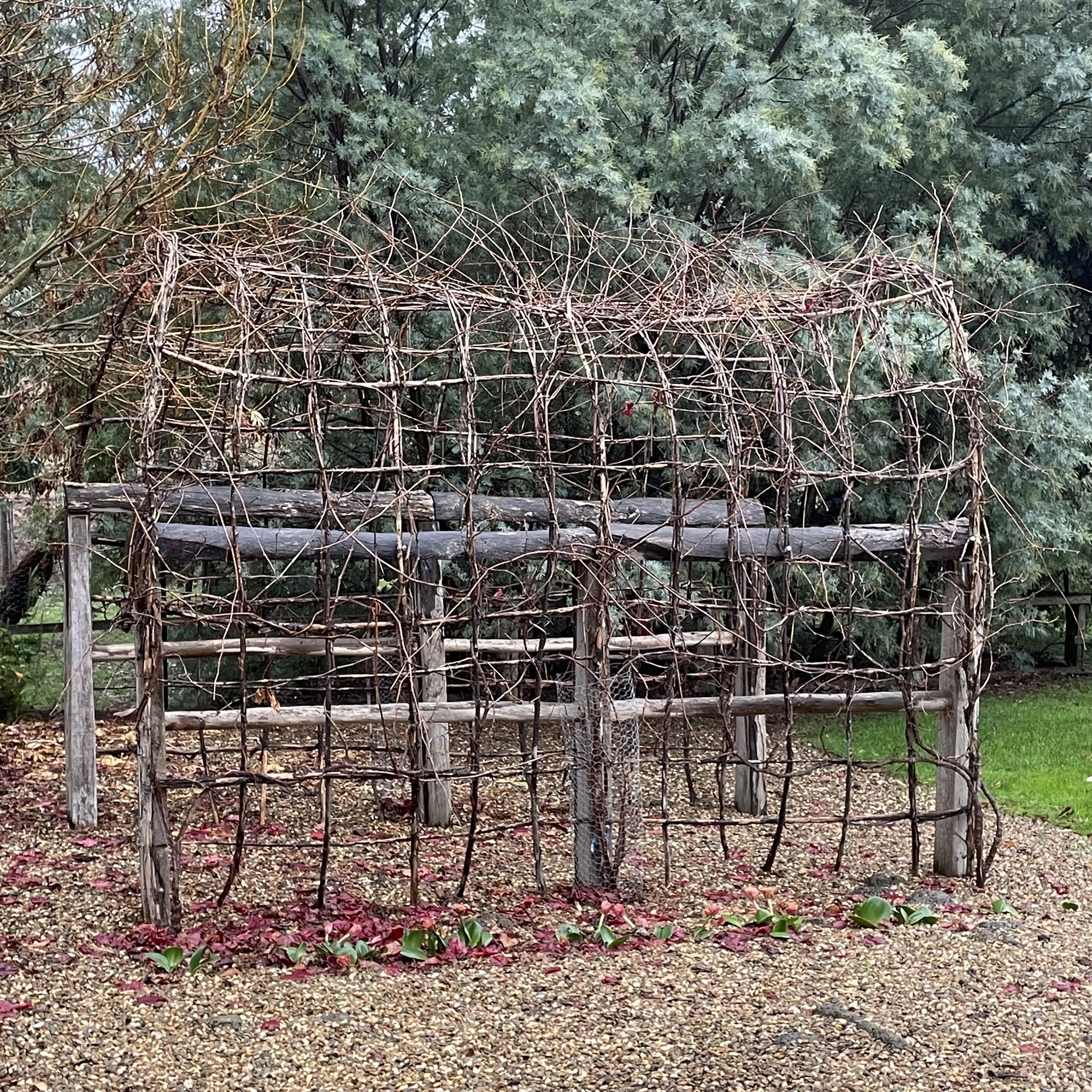THE STONES
I have always thought that I had some good gritty stories of planting the wrong plant in the wrong place, laughing lightly about my larkspur that grew horizontal to the ground as they tried to flee the shade of my fences. I’d nod in mock wisdom that I had ‘learned my lessons well’. But in reading about the planting adventures of Jeremy Valentine and Grant Francis in coming to grips with the inhospitable climate, ground and pests of Central Victoria, I once again felt like a fledgling gardener!
Where my nice sheltered Christchurch climate spans at total extremes of the odd -5 to 32-ish C, The Stones plants and gardeners gamble with -7 to 47 C. My pest (singular) is my cat and his hunt for a new bathroom - The Stones rabbit population demands fencing and I don’t have a cockatoo in sight!
There is an abundance to be learned from this story, in particular the importance of letting the environment inspire planting as opposed to dreamy optimism and the punishment that follows. The Stones walks a beautiful line of ‘the garden curtsying to the house’ while introducing refreshing, modern approaches of combining architectural succulents with soft grasses and specimen trees.
Anyone growing (no matter the size of the plot) in dry hot/cold places will find much inspiration here with the words and images of Jeremy Valentine.
Julia x
Garden profile
GARDEN: The Stones
Jeremy Valentine & Grant Francis
LOCATION: Central Victoria, halfway between Daylesford and Castlemaine.
SIZE: 10 acres of rocky volcanic land above alluvial flood planes.
3 acres of garden.
ENVIRONMENT: A temperature range of -7 to 47 degrees, with around 620ml of rainfall, mainly over the winter months. Soil is extremely free draining volcanic with seams of basalt tailing off to alluvial soils along the river flats.
@thestonescentralvictoria
It was a particularly hot and dry summer that first year back in 2013. And we weren’t at all prepared for the medley of extremes that shapes this stretch of the land on the north side of the Great Divide in Central Victoria.
It’s a historically elegant land that was changed considerably during the gold rush and is still peppered with ruins, old mine shafts and abandoned villages lost to the bush.
Our winters are cold and wet here, with frequent brittle frosts which can hold on until after midday. And our summers are hot and dry, with weeks without a single drop of rain.
We were gardening blind and threw many a plant into the abyss in those early days. Just when we thought we’d mastered the hot and the dry of summer, we then lost plants left right and centre to the savage frosts from April to November. Even supposedly frost tolerant plants weren’t tough enough for our conditions here.
A beautiful paulownia in full chorus.
An example of Jeremy’s stone work.
Grant’s gardening experience was from a young age in mild climate Hobart, Tasmania, and I am originally from the UK, where I spent most of my childhood in the garden. When I was ten I moved to Buderim, Queensland with my family and stayed with my grandparents who had a property with a rambling Edna Walling garden. I think this spawned my love of gardens imbued with a sense of mystery. The voice of Edna Walling is forever in my mindset, and has influenced my approach to gardening here.
Of course, living in central Melbourne for thirty years in various apartments didn’t allow for gardening whatsoever, so when we moved to the country the flame was reignited with a sudden spark.
Now we couldn’t imagine life without gardening. It’s our meditation and our recovery from our busy lives running two stores in the city.
“Slowly and surely we learnt the language of this place, and listened to the rhythm of the seasons, each one with its own distinct characteristics and its own set of challenges. And through this, our repertoire of suitable plants evolved. ”
When we arrived there were some cleverly chosen trees, a lot of Tuscan rosemary and a few untamed blobs of Correa (Australian fuchsia) and Tuecrium fruiticans. It was a largely paired back garden that was limited to the apron of the house, and the rest was lost to the weeds - every weed known to man. Even the paddocks were overtaken with cape weed and Paterson’s curse (Echium plantagineum) which, in particular, took many years of dedication to eradicate.
But slowly and surely we learnt the language of this place, and listened to the rhythm of the seasons, each one with its own distinct characteristics and its own set of challenges. And through this, our repertoire of suitable plants evolved. But above all of this, our little world is dictated by a greater force, and it’s one which is shaped by the history of the house and its outbuildings which date from the mid-1850s.
A Robinia archway invites you into the courtyard.
Tough sedum with equally tough neighbours
“The plants which seem to work best here are the architectural ones, the layers of greens, greys and silvers. This garden is not particularly pretty or frothy with ‘feminine’ touches and it’s definitely not a riot of colour. As much as I love this in other people’s gardens, it simply doesn’t work here. So our taste in things is governed by the place itself and the climate rather than our glutinous flights of fancy. ”
The atmosphere here is so strong that the garden must sit quietly within its surroundings, otherwise, the harmony is lost. Additionally, landscaping must be carefully considered not to upset the spirit of the place, a place free of straight lines or anything too smart, shiny and slick, or in fact anything modern or new.
Our fortunes of rock laying about the property sparked my interest in drystone walling, and over the years I’ve built numerous walls, bollards and steps which are as important as the plantings methinks. In the dead of winter when the garden thins out to frost-bitten twigs and the bare branches of the trees, the stony bones of the garden are held together by these structures, and it all feels right.
“Our fortunes of rock laying about the property sparked my interest in drystone walling, and over the years I’ve built numerous walls, bollards and steps which are as important as the plantings methinks. In the dead of winter when the garden thins out to frost-bitten twigs and the bare branches of the trees, the stony bones of the garden are held together by these structures, and it all feels right. ”
The plants which seem to work best here are the architectural ones, the layers of greens, greys and silvers. This garden is not particularly pretty or frothy with ‘feminine’ touches and it’s definitely not a riot of colour. As much as I love this in other people’s gardens, it simply doesn’t work here. So our taste in things is governed by the place itself and the climate rather than our glutinous flights of fancy.
We do however shape the chaos, clipping some things, whilst letting other things go a little wild, often side by side. Our favourite plants change along the way sometimes lost to adversity. Like the arrival of two peacocks (although we love them), who found an insatiable taste for honesty (Lunaria) which was such a constant here in this garden, but no more. And changes within the microclimate of the garden here, due to the trees creating shade where the sun once shined, have cast parts of the “old” garden into a state of evolution.
PEST LIST
Rabbits are perhaps the most unrelenting and destructive pest in our garden, which due to the topography of the land is impossible to rabbit-proof with fences. Instead, we must fence off individual beds containing the most delicious plants. The vegetable garden is completely rabbit proofed!
Cockatoos, although wonderful, and naturally part of the land here, do target certain trees and plants decimating flowers, fruits and seeds, and creating a huge mess in the process.
White Fly - particularly prevalent in the warmer months.
Pear Slug - a perpetual nuisance in spring and early summer.
Leaf Curl - a Central Victorian scourge that affects so many of us in this neck of the woods.
“The atmosphere here is so strong that the garden must sit quietly within its surroundings, otherwise, the harmony is lost. Additionally, landscaping must be carefully considered not to upset the spirit of the place, a place free of straight lines or anything too smart, shiny and slick, or in fact anything modern or new. ”
KEY PLANTS
Here are a few key plants at The Stones - all able to withstand our harsh conditions.
Agave americana, opuntia (prickly pear), Echinopsis spachiana - as well as other frost hardy cactus varieties.
Rosemary
Iris
Miscanthus - both the sinensis and yakushima varieties.
Stipa gigantea
Macleaya cordata (plume poppy)
Olives
Cupressus sempervirens glauca (pencil pine)
Baby Sun Rose - an extremely useful ground cover in the hardest of places.
Sedum ‘Autumn Joy’ - absolutely bullet proof and compelling blooms at all stages.
Cotyledon -green and silver varieties
Paulownia and Catalpa - favourite trees with oversized leaves, beautiful flowers and wonderful shade.
Robinia
Azara microphylla - with it’s intoxicating vanilla and chocolate fragrance, and ghostly sinuous branches.
INSPIRATION
My current list of inspirational garden books.
The House and Garden at Glenmore: Landscape. Seasons. Memory. Home by Mickey Robertson
Eden Revisited: A Garden in Northern Morocco by Umberto Pastis, Ngoc Minh Ngo
Disobedient Gardens: Landscapes of Contrast and Contradiction by Michael Cooke
Australian Dreamscapes: The Art of Planting in Gardens inspired by Nature by Claire Takacs
Gardens on the Edge: A Journey through Australian Landscapes by Christine Reid
The Gardens of Gertrude Jekyll by Richard Bisgrove
All Edna Walling and Ellis Stones books.
Instagram inspiration.
@michaelcookegardendesign
A sublime atmospheric garden, and the author of one of my favourite books, The Disobedient Garden.@simon_rickard
A plantsman with incredible knowledge.@michaelmccoyongardens
Informative and insightful, with a great slant on what gardening is about.@galah.press
A country magazine which breaks the stereotypes, beautifully curated stories and images.@lazybadger_countrygarden
My gardening friend and confidant. We live on the other side of the ranges, totally different climates, but on the same journey of garden discovery.@glenmorehouse
Total inspiration. Mickey and Larry have transformed an historic ramshackled property into the utter beauty that is The House and Garden at Glenmore. A true testament to vision, determination and patience since the 1980s, and home to stunning workshops.@thegardencurator
An artist and gardener in wonderful symbiotic harmony.@davidmoore
A painter who captures the very essence of Central Victoria in his landscapes.@boatsend_garden
A fascinating approach to the landscape.@hillanddalegardens
Pure romantic garden loveliness in a tough climate.@thegardenatbroughtonhall
A world class garden which was once a cow paddock in the rolling hills of South Gippsland.@fishermansbay_garden
Otherworldly and utopian.@ralphbristow_artist
A perennial wonderland.@westcountry_hedgelayer
Inspirational traditional hedge-laying.
Provided links to plants are chosen by Julia with no bias - simply to connect with the best imagery and information to aid the reader on that plant.
No affiliate or sponsored links are included - please beware they may contain some seasonal information from other countries that differ from the one you are in!

